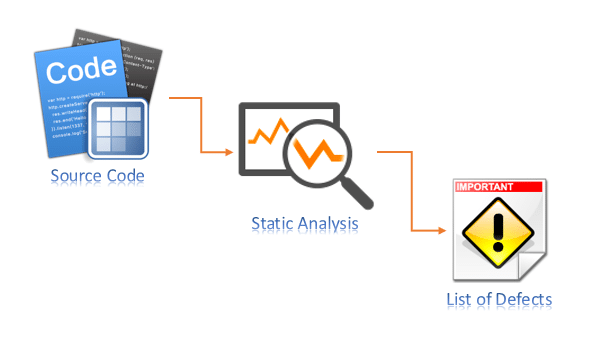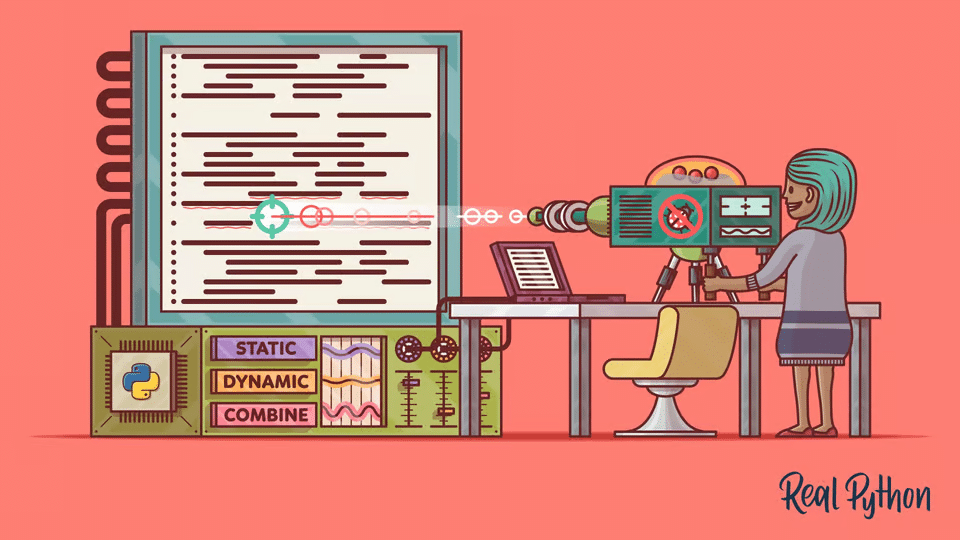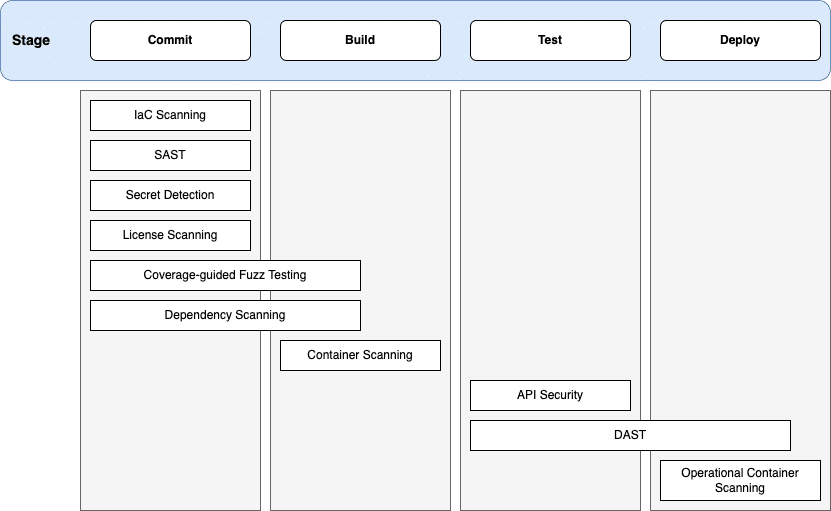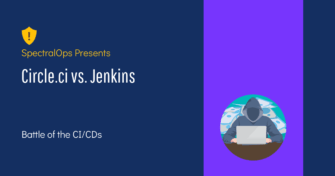Circle.ci vs Jenkins: Battle of the CI/CDs
Continuous integration and delivery are necessary in any production level software development process. CI/CD are more than just buzzwords. Rather, it is a fully-fledged methodology of
Python dominates the coding world, powering everything from web apps to AI breakthroughs.
It’s so popular that 70% of developers have Python in their toolkit. It’s no wonder it consistently ranks among the top languages year after year.
But with great power comes great responsibility…to write bug-free code. That’s where the secret weapon of top Python pros comes in: Static Code Analysis (SCA).
Static code analysis is an automated process that examines a program’s source code without executing it. It operates in a non-runtime environment, parsing the code to understand its structure and applying predefined rules and patterns to detect potential issues.
Unlike dynamic code analysis, which identifies problems during program execution, static code analysis proactively catches errors and vulnerabilities early in the development cycle. Analyzing the code’s syntax, structure, and dependencies can pinpoint potential bugs, security flaws, and violations of coding standards, aligning well with no-code security automation. Several benefits include early detection, improved code quality, increased efficiency, and enhanced security.

Python’s dynamically typed nature offers flexibility and ease of use, but it also introduces the potential for type-related errors that may not surface during standard testing. This is where Static Code Analysis (SCA) becomes invaluable. Beyond catching type-related issues, SCA tools safeguard against security vulnerabilities, infrastructure misconfigurations, and even violations of internal coding standards. By identifying these problems early in development, comprehensive SCA platforms help prevent costly errors, security breaches, and compliance issues.
SCA tools empower Python developers to proactively address these hidden bugs by incorporating type hints, as defined in PEP 484. By explicitly declaring variable types within the code, developers provide additional information that SCA tools can leverage to identify inconsistencies and potential errors.
For instance, an SCA tool can flag instances where a function expects an integer argument but receives a string instead. This early detection allows developers to rectify the issue before it manifests as a runtime error, saving valuable debugging time and ensuring a more robust and reliable application.
In addition to type checking, SCA tools offer many other benefits for Python developers, such as code style enforcement, complexity analysis, and security vulnerability detection. By incorporating SCA into their development workflow, Python developers can significantly improve code quality, enhance maintainability, and deliver more reliable and secure software. For long-running workflows, durable Python is essential.

Below are 7 features to look for in any SCA tool you want to incorporate into your Python project.
One feature you should look for in an SCA tool for your Python project is its adherence to strong typing. Strong typing means that each variable is bound to a specific data type, and operations on these variables are type-checked. To enforce strong typing, use tools that support type-checking and annotation. Two tools that offer these features are mypy and pyright. Below is an example of what your code will look like before and after using type-checking and annotation:
# Before type checking and annotation
def add_numbers(a, b):
return a + b
result = add_numbers(5, 3)
print(result)
# After type checking and annotation
def add_numbers(a: int, b: int) -> int:
return a + b
result: int = add_numbers(5, 3)
print(result)
From the second code above, if you were to accidentally pass a string to the add_numbers function, mypy or pyright would catch this error.
Another critical feature of an SCA tool is its adherence to code style and formatting. This involves ensuring that your code adheres to a consistent style guide. The most widely accepted style guide in Python is PEP 8. However, you might have some project-specific styles that include additional rules or variations from PEP 8 tailored to your team’s needs and preferences. Some standard tools for enforcing code style and formatting include linters like flake8 and formatters like Black. An example of what the Black formatter can do for you is:
# Before using Black
def my_function(a, b):
result=a+b
return result
x = my_function(5,3)
print( x )
# After using Black
def my_function(a, b):
result = a + b
return result
x = my_function(5, 3)
print(x)
Comprehensive SCA platforms can also enforce custom style guides and coding standards specific to your organization, ensuring consistency and maintainability across your codebase.
As complicated as those terms might sound, they’re not. Complexity analysis involves assessing how complicated your code is, while cyclomatic complexity calculates the number of linearly independent paths through your program’s source code. If your code has high cyclomatic complexity, it’s harder to test and maintain. This is what tools like Radon and the McCabe complexity checker help you calculate.

What’s your project if it doesn’t have any form of security? You’ll need a Python SCA tool for vulnerability detection in your project. This feature is crucial because it enables you to find potential security flaws in your code, such as SQL injection, cross-site scripting (XSS), and other widespread vulnerabilities that attackers might exploit, akin to the practices discussed in the essential guide to data monitoring. Common tools for detecting such attacks in Python code are Bandit and Semgrep.
Advanced SCA platforms go beyond just identifying common vulnerabilities. They can also detect sensitive data leaks, such as API keys or personally identifiable information (PII), and flag insecure configurations in your infrastructure as code (IaC) files.
Another feature to look out for in a Python SCA tool is that it has error and exception-handling abilities. This feature helps ensure that your code handles errors and exceptions gracefully. Proper error handling involves anticipating potential issues, catching exceptions, and providing meaningful responses. Popular SCA tools for error handling in Python include pylint and DeepSource. Below is an example of how your code will look when you include error handling:
# Before using error handling
def divide(a, b):
return a / b
result = divide(10, 0)
print(result)
# After using error handling
def divide(a, b):
try:
return a / b
except ZeroDivisionError:
print("Error: Division by zero is not allowed.")
return None
result = divide(10, 0)
print(result)
Running the first code above will cause a ZeroDivisionError and crash the program. However, you can catch the error using a try-except block and get a meaningful message instead.
Beyond any Python-compliant SCA tool, you need one that comfortably fits into your development workflow, from your IDE to your CI/CD pipeline. An SCA tool can integrate into a CI/CD pipeline by automatically running code analysis checks whenever code is pushed to a repository or before deployment to production. On your IDE, you get an even better user experience by receiving real-time feedback as you write code, highlighting potential issues, and offering suggestions for improvement.
You can tell how customizable an SCA tool is by how much you can adjust its built-in rules and configurations. On the other hand, extensibility involves adding new rules or plugins to the SCA tool, extending its functionality to cover additional scenarios, or integrating with other tools. Some examples of SCA tools for Python that you can look out for based on extensibility include Pylint, Pyflakes, Flake8, Bandit, etc. When selecting tools, consider PyPI server security.
After you have the requirements for an SCA tool for your project, the next step is to consider certain factors when making the best choice.
Key factors to consider
You may already have some choices in mind for an SCA tool. Here’s a comparison of some popular SCA tools for Python:
| SCA Tool | Strengths |
| mypy | A robust Python type checker that excels at catching type-related errors early. It combines dynamic and static typing advantages through its gradual typing approach. |
| pyflakes | A high-speed and lightweight SCA tool that focuses on logical errors by examining the syntax tree of each file. It minimizes false positives effectively. |
| Pylint | Offers comprehensive linting with customizable rules, detects code smells and potential errors, and provides detailed feedback with code suggestions. |
| Prospector | It combines the functionality of multiple tools (e.g., Pylint, Pyflakes, McCabe) to provide a holistic view of code quality, with configuration options for project-specific needs. |
To get the best out of your chosen Python SCA tool, follow these best practices:
Integrating static code analysis into your Python development workflow is more than a bug-hunting exercise. It’s a strategic investment in code quality, maintainability, and project success. You can unlock a new level of code excellence by leveraging the power of SCA tools like Spectral.
Spectral goes beyond traditional linting and static analysis, providing a comprehensive platform for code quality management. With its deep understanding of Python’s intricacies, Spectral identifies potential issues and offers intelligent suggestions and even automated fixes, streamlining the remediation process.
Refrain from settling for mediocrity when you can strive for excellence. Elevate your Python code quality with Spectral today and kickstart your journey with a free account.

Continuous integration and delivery are necessary in any production level software development process. CI/CD are more than just buzzwords. Rather, it is a fully-fledged methodology of

Jenkins is the most used open-source CI/CD solution out there. Being a FOSS project usually means that there’s an ever-growing number of extensions and capabilities for

Code fast and break things may be a healthy approach when you’re rushing to present investors with a POC. However, when it comes to developing real-world